
What does the energy label of your television mean?
Sections of the energy label
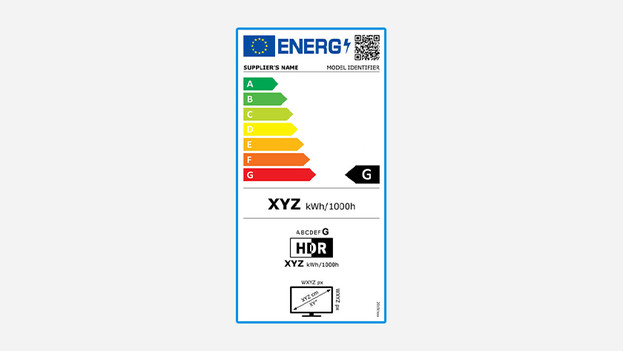
The energy label of your television has the following sections:
- QR code
- Energy label
- Energy consumption
- HDR energy label and consumption
- Size of the TV
In this article, we'll highlight these sections.
QR code
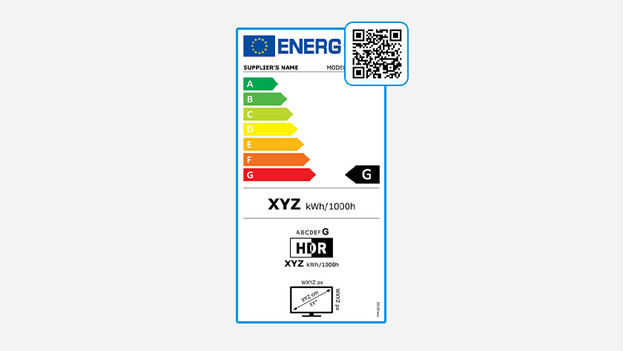
In the upper right corner of the energy label, you'll find a QR code. If you scan this QR code with your smartphone, you'll go to the database of the European Union. This is where you can find more details on your TV and you can easily compare the energy consumption of different televisions.
Energy label
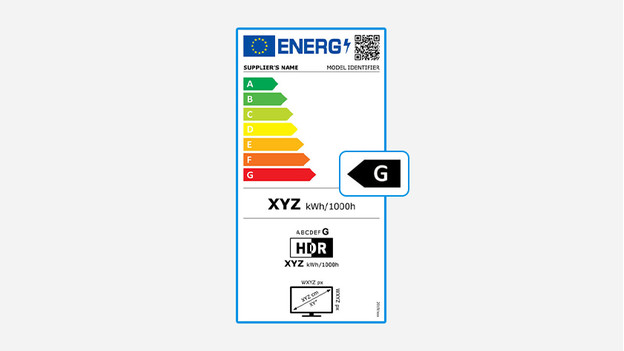
The energy label of a television indicates how sustainable the TV is on a scale from A to G. The closer the label is to A, the more energy-efficient the television is. An energy-efficient TV is more affordable in use, because you pay less electricity costs. Due to the stricter laws from the European Union, TVs get a low energy label at the moment. That way, there's room to make TVs more energy efficient.
Energy consumption
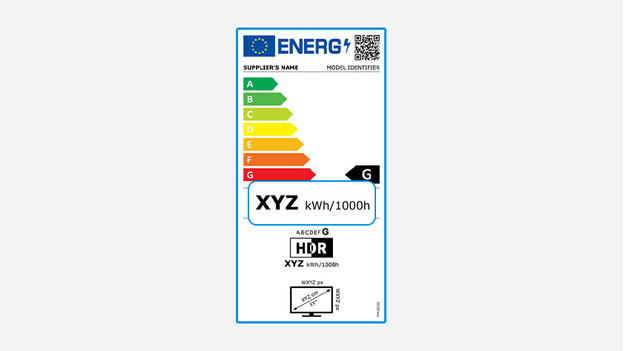
Below the energy label, you can find the energy consumption of the TV. On old labels, you could find the yearly energy consumption, but now you can see the energy consumption in kWh per 1000 watching hours in the standard mode of the TV.
HDR energy label and consumption

Next, the energy label and energy consumption of the television in HDR mode are indicated. Most TVs use a higher screen brightness when you watch HDR images. That way, the wide color gamut and powerful contrast of the HDR stand out more. As a result, the energy consumption in HDR mode is often different from the consumption in standard mode. Because of that, HDR mode gets a separate energy label and energy consumption per 1000 watching hours.
Size and resolution of the TV
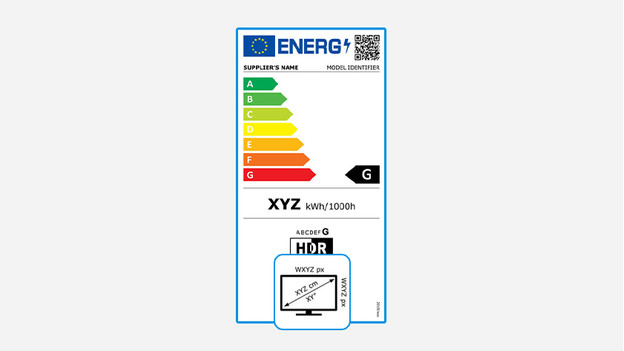
At the bottom of the energy label, you'll find an icon with the screen size of the TV in centimeters and inches. The size of the TV has an effect on the energy label. Larger televisions often use more power than smaller ones. You can also find the resolution in the number of horizontal and vertical pixels. For a 4K television, this is 3840 px and 2160 px. The resolution also determines the energy consumption. A TV with an 8K resolution uses more power than a 4K television.
The new energy labels and EcoCheques in Belgium
Due to the stricter rules for the newer energy label, the rules for buying televisions with EcoCheques have been adjusted. You can only pay for a TV with EcoCheques if the television has an E energy label or higher. The assortment of TVs that you can purchase with an EcoCheque will grow in the coming years, since television manufacturers will offer increasingly energy-efficient televisions.


